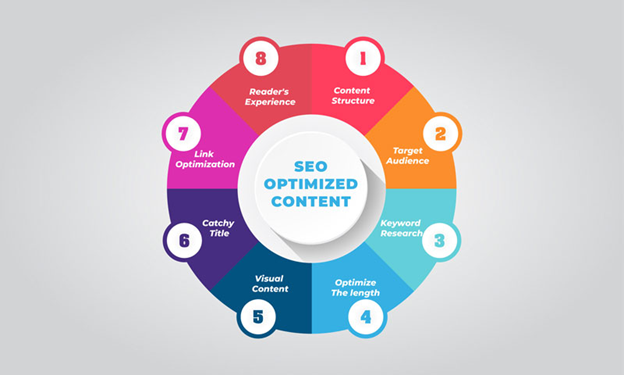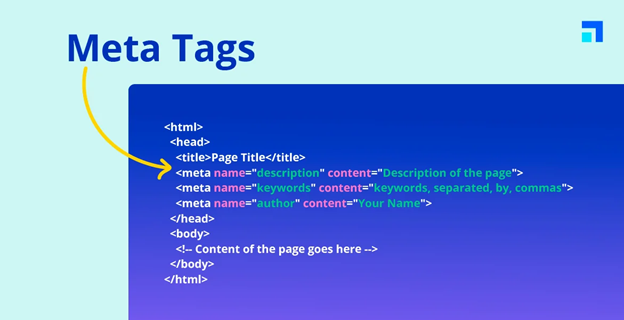SHARE

In today’s digital landscape, having a strong online presence is crucial for businesses and individuals alike. With millions of websites competing for attention, it’s essential to ensure that your content stands out and reaches its intended audience. This is where Search Engine optimisation (SEO) comes into play.
Understanding the Importance of SEO in Content Creation
SEO, or search engine optimisation, is a crucial aspect of digital marketing that focuses on optimising your website and its content to improve its visibility on search engine results pages (SERPs). By incorporating effective SEO strategies into your content creation process, you can significantly increase your chances of appearing higher in search engine rankings. This, in turn, leads to more organic traffic and potential customers discovering your website.
[thrive_leads id=’8325′]
When it comes to content creation, SEO plays a vital role in ensuring that your efforts are not in vain. It’s not just about creating high-quality and engaging content; it’s also about making sure that your target audience can find it easily. By implementing SEO techniques, you can enhance the discoverability of your content and maximise its impact.
 The Role of SEO in Digital Marketing
The Role of SEO in Digital Marketing
In the vast realm of digital marketing, SEO is like a guiding light that helps businesses navigate the complex world of online visibility. It plays a pivotal role in driving organic search traffic to your website, which is essential for sustainable growth and success.
Imagine this: you have an amazing website with valuable products or services, but if it’s buried deep in the search engine results, it might as well be invisible. This is where SEO comes into play. By optimising your content and website for search engines, you increase the chances of your website appearing in the top results when potential customers search for relevant keywords or phrases.
Think of SEO as a digital marketing superhero that swoops in and ensures that your website gets the attention it deserves. By aligning your content with SEO best practices, you can make it easier for search engines to understand and prioritise your website, ultimately leading to more targeted traffic and potential customers.
How SEO impacts your online visibility
Online visibility is crucial for any business or website that wants to thrive in the digital landscape. After all, what good is a fantastic website if no one can find it?
Studies have shown that the majority of search engine users rarely venture beyond the first page of search results. This means that if your website doesn’t appear on that coveted first page, you’re missing out on a significant amount of potential traffic and customers.
By incorporating SEO practices into your content creation process, you increase your chances of securing a spot on that first page. This boosts your online visibility and makes it more likely for your target audience to discover and click on your website. The higher your website ranks on search engine results pages, the more visible you become to your potential customers.
Imagine your website appearing at the top of the search results, like a shining beacon in the digital realm. This increased visibility not only drives more clicks and traffic to your site but also enhances your brand’s credibility and authority in the eyes of your audience.
So, the next time you embark on a content creation journey, remember the power of SEO. By incorporating effective SEO strategies, you can elevate your website’s visibility, attract more organic traffic, and unlock the potential for business growth and success.
Key elements of SEO-Optimised Content
The Significance of Keywords in SEO
Keywords are the building blocks of SEO. They are the words and phrases that people use when searching for information online. By conducting thorough keyword research and incorporating relevant keywords into your content, you can increase the likelihood of your website appearing in search engine results for those specific search queries. However, it’s important to strike a balance – keyword stuffing can be detrimental to your SEO efforts.
When it comes to keywords, it’s not just about quantity but also about relevance. You need to identify the keywords that are most relevant to your business or industry. For example, if you own a bakery in London, you would want to target keywords such as “best bakery in London,” “freshly baked bread,” or “delicious pastries.” These keywords will help you attract the right audience and increase the chances of converting them into customers.
Moreover, it’s essential to understand the intent behind the keywords. Are people looking for information, products, or services? By aligning your content with the user’s intent, you can provide them with the most relevant and valuable information, increasing the chances of them staying on your website and taking the desired action.
Importance of Quality and Relevant Content
While keywords are vital, it’s equally important to focus on creating high-quality and relevant content. Search engines prioritise content that provides value to users. By producing well-researched, informative, and engaging content, you not only satisfy the search engine algorithms but also attract and retain visitors to your site. Quality content also encourages other websites to link back to your site, further enhancing your SEO efforts.
When creating content, think about your target audience and their needs. What information are they looking for? What problems do they need solutions to? By addressing these questions in your content, you can position yourself as an authority in your industry and build trust with your audience.
Additionally, consider the format of your content. While written content is essential, incorporating other formats such as videos, infographics, or podcasts can make your content more engaging and appealing to different types of users. This variety can also help you rank higher in search engine results, as search engines value websites that provide a diverse range of content.
Furthermore, don’t forget to optimise your content for readability. Use subheadings, bullet points, and short paragraphs to break up the text and make it easier for users to scan and digest the information. Including relevant images and multimedia elements can also enhance the overall user experience and make your content more shareable on social media platforms.
Steps to create SEO-optimised content
 Researching and Selecting the Right Keywords
Researching and Selecting the Right Keywords
The first step in creating SEO-optimised content is conducting keyword research. Utilise various tools to identify keywords that are relevant to your target audience and have a reasonable search volume. Once you have a list of potential keywords, select the ones that align with your content and have a good balance of popularity and competitiveness. These keywords will help guide your content creation process.
Creating Engaging and SEO-Friendly Titles
Titles play a crucial role in grabbing the attention of both search engine algorithms and readers. Craft titles that accurately describe your content while incorporating relevant keywords. Additionally, make sure your titles are enticing, so users are compelled to click through and read your content. By blending SEO considerations with creativity, you can create titles that effectively optimise your content without sacrificing reader interest.
Writing High-Quality, Keyword-Rich Content
Once you have identified your keywords and crafted compelling titles, it’s time to create the body of your content. Focus on producing well-written, informative, and engaging copy that incorporates your keywords naturally. Avoid keyword stuffing, as it can harm your SEO efforts and deter readers. Remember to structure your content with headings, subheadings, and paragraphs to make it easier to read and digest.
The role of Meta Tags in SEO-Optimised Content
 Understanding Meta Tags and Their Importance
Understanding Meta Tags and Their Importance
Meta tags are snippets of HTML code that provide additional information about your webpage to search engines. While their direct impact on ranking has diminished, they still play a crucial role in optimising your content. Crafting unique and descriptive meta tags that include relevant keywords and accurately summarise your content can improve your click-through rate and attract targeted traffic to your site.
How to Effectively Use Meta Tags in Your Content
When incorporating meta tags into your content, focus on the meta title and meta description. The meta title should succinctly capture the essence of your content and include targeted keywords. The meta description should provide a concise summary of your content, enticing users to click through to your website. By optimising these tags, you increase the chances of your content being clicked and visited.
Monitoring and Improving your SEO Content Strategy
Tools for tracking Your SEO Performance
To ensure the success of your SEO content strategy, it’s important to monitor your performance regularly. Utilise tools such as Google Analytics and Search Console to track your website’s organic traffic, keyword rankings, and user engagement metrics. By analysing these metrics, you can identify areas for improvement and make data-driven decisions to enhance your content strategy.
Tips for Improving your SEO Content Strategy
Continuous improvement is key to maintaining a strong online presence. Regularly review your keyword research, update your content with fresh information, and adapt to changes in search engine algorithms. Additionally, build high-quality backlinks from reputable websites to boost your website’s authority and improve your SEO efforts. Staying proactive and adapting to changes in the digital world is essential for keeping your content fresh and visible online. By taking an SEO course, you can learn how to optimise your content effectively, ensuring it reaches the right audience and stands out in a crowded space. Embracing these shifts will help maximise your online visibility and drive more traffic to your site.
In conclusion, creating SEO-optimised content is a critical component of maximising your online visibility. By understanding the importance of SEO, incorporating relevant keywords, and producing high-quality content, you can improve your website’s search engine rankings and attract targeted traffic. Furthermore, utilising meta tags, monitoring your performance, and continuously improving your SEO content strategy will ensure that your online presence remains strong in the ever-evolving digital landscape.
Frequently Asked Questions About SEO-Optimised Content
Why is SEO Optimised Content Important?
Another reason why content is important for SEO is because you can nurture your audience with content. Search engine optimisation can target all funnel stages, from top-of-the-funnel to bottom-of-the-funnel. Target all funnel stages with great content, and you have the foundation for nurturing your audience.
What are the Benefits of Optimised Content?
Content optimisation helps you write better content that’s better at driving traffic, which means more people see what you write. By writing quality content, you can increase the odds that people who do read your content will come back for more.
How do I Create SEO Content?
- Make a list of topics.
- Make a list of long-tail keywords based on these topics.
- Build pages for each topic.
- Set up a blog.
- Create a consistent blogging schedule.
- Create a link-building plan.
- Compress media files before uploading them to your site.
- Stay up-to-date on SEO news and best practices.
How does SEO Influence Content Marketing?
SEO helps people find your content, while content helps drive traffic to your site and improves your ranking. A successful content marketing strategy requires SEO and vice versa. To get the best results with your campaign, focus on building a strategy that incorporates these strategies together.
How do I know if my Content is SEO optimised?
There are several ways to check if content is SEO-optimised: Use keyword research tools: Keyword research tools such as Google Keyword Planner, SEMrush, and Ahrefs can be used to identify relevant keywords and phrases that should be included in the content.
[/fusion_text][/fusion_builder_column][/fusion_builder_row][/fusion_builder_container]



 The Role of SEO in
The Role of SEO in  Researching and Selecting the Right Keywords
Researching and Selecting the Right Keywords Understanding
Understanding 










